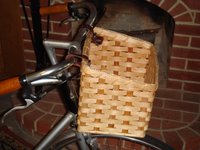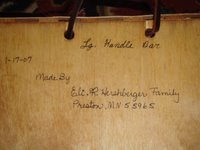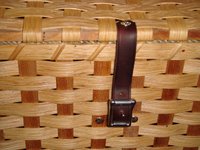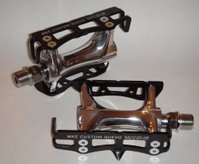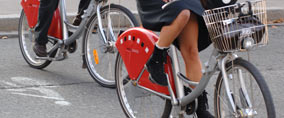 An e-mail from a friend reminded me of my favorite bike related book, Need for the Bike by Paul Fournel. I've read it at least three times, savoring it slowly each time like a great wine. It is one of the few books about cycling that deserves to be called literature. Need for the Bike is both humorous and profound. It reveals many truths that you knew, but didn't realize you knew. And it introduces you to a bit of French cycling slang: "The witch with the green teeth", "The man with the hammer", "squirrels", "eating wool", etc. You can read a bit of it here.
An e-mail from a friend reminded me of my favorite bike related book, Need for the Bike by Paul Fournel. I've read it at least three times, savoring it slowly each time like a great wine. It is one of the few books about cycling that deserves to be called literature. Need for the Bike is both humorous and profound. It reveals many truths that you knew, but didn't realize you knew. And it introduces you to a bit of French cycling slang: "The witch with the green teeth", "The man with the hammer", "squirrels", "eating wool", etc. You can read a bit of it here.
Rather than offer a poor review, I'll simply copy what's on the back cover as it's a rare case of the book living up to, if not exceeding, the publisher's hype:
A book like no other, Paul Fournel’s Need for the Bike conducts readers into a very personal world of communication and connection whose center is the bicycle, and where all people and things pass by way of the bike. In compact and suggestive prose, Fournel conveys the experience of cycling—from the initial charm of early outings to the dramas of the devoted cyclist.
An extended meditation on cycling as a practice of life, the book recalls a country doctor who will not anesthetize the young Fournel after he impales himself on a downtube shifter, speculates about the difference between animals that would like to ride bikes (dogs, for instance) and those that would prefer to watch (cows, marmots), and reflects on the fundamental absurdity of turning over the pedals mile after excruciating mile. At the same time, Fournel captures the sound, smell, feel, and language of the reality and history of cycling, in the mountains, in the city, escaping the city, in groups, alone, suffering, exhausted, exhilarated.
In his attention to the pleasures of cycling, to the specific “grain” of different cycling experiences, and to the inscription of these experiences in the body’s cycling memory, Fournel portrays cycling as a descriptive universe, colorful, lyrical, inclusive, exclusive, complete.
Paul Fournel is a member of Oulipo, a collective of avant-garde writers whose works focus on the problems and puzzles of language. He is presently the cultural attaché at the French Embassy in Cairo. Allan Stoekl is a professor of French at Pennsylvania State University, the author and editor of a number of books, and the translator of Maurice Blanchot’s The Most High (Nebraska 1996).
I'm also reminded of another fine book in a similar vein, Daniel Behrman's The Man Who Loved Bicycles; unfortunately it's now out of print.Do you know of any other great cycling literature?


















